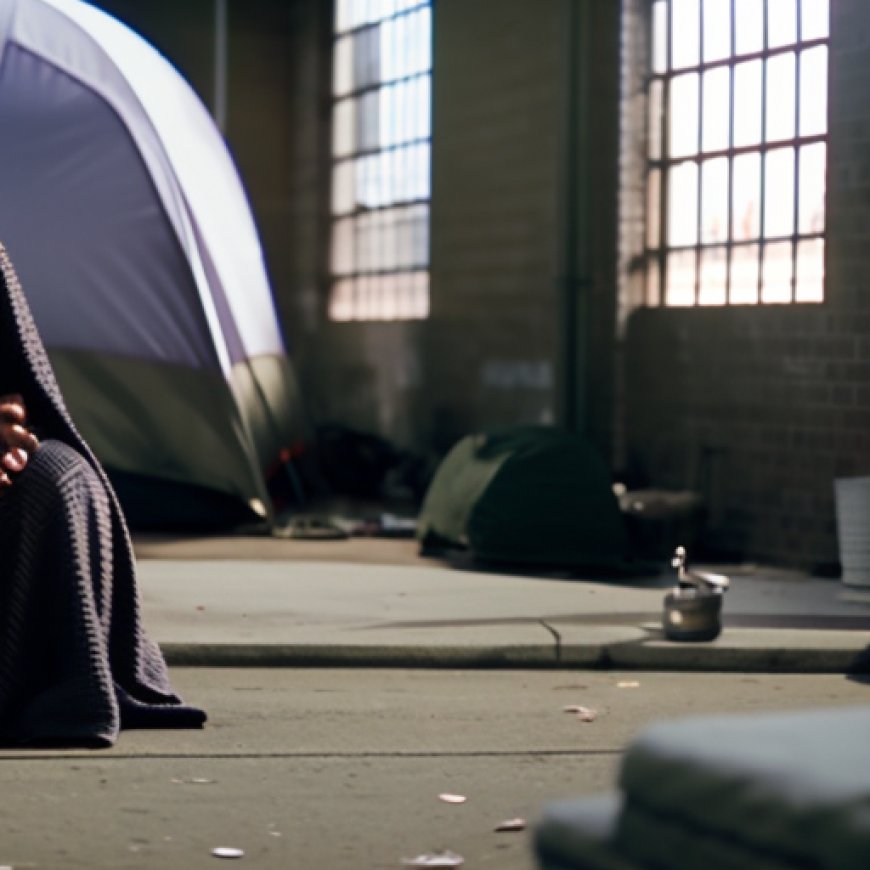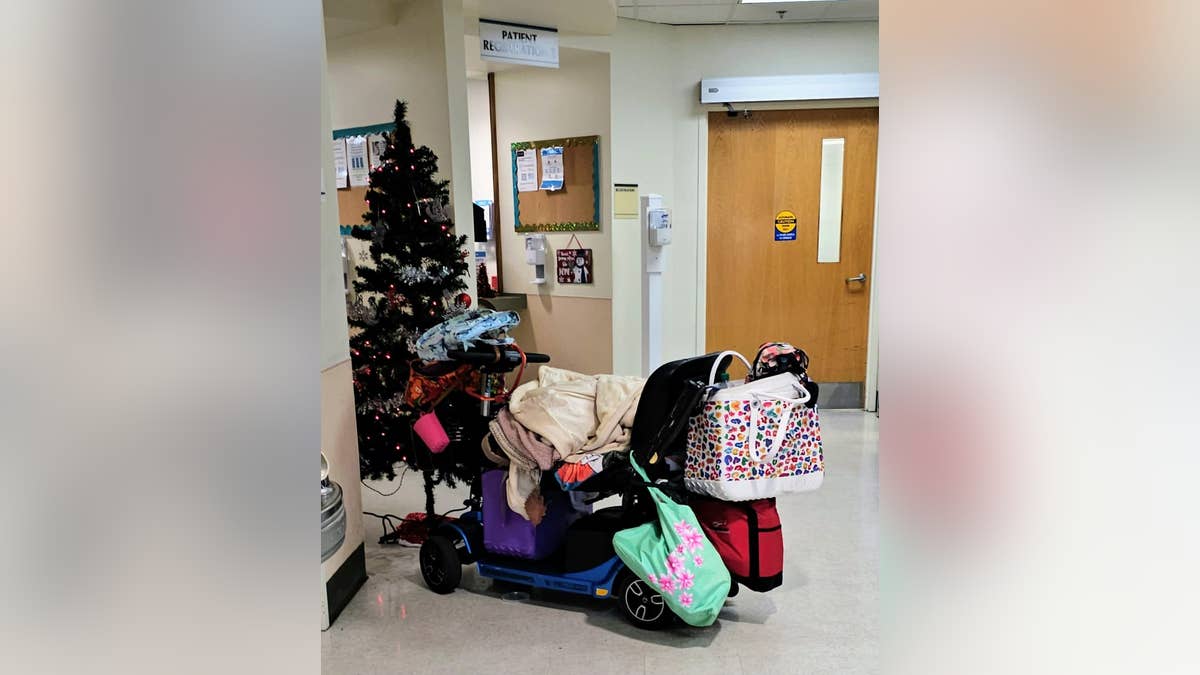Safe, affordable housing for vulnerable people: How a Virginia organization is confronting homelessness


Johnson Homes: Providing Affordable Care Facilities for Homeless Individuals

71-year-old retired CNA’s belongings photographed in the emergency room as she struggles to find a housing solution. (Courtesy of Lisa Suhay)
Introduction
Between treating medical conditions, addressing mental health, and finding stable housing, homeless individuals in the United States face numerous challenges. Johnson Homes, a placement agency based in Norfolk, Va., aims to address these challenges by providing affordable care facilities for seniors and other vulnerable individuals with specific health needs. This report highlights the efforts of Johnson Homes and its impact on the homeless community.
Background
Johnson Homes was founded in 2022 by Janice Miles, an investor and house flipper, in response to her personal experience with her mother’s early onset dementia diagnosis. The agency, named after Miles’ mother, aims to assist individuals who lack family support in finding safe and stable housing.
Partnerships and Services
Johnson Homes collaborates with local organizations to provide wraparound services and case management to homeless individuals, people with mental health disabilities, and others in need of stability. The agency works as a liaison between homeless individuals and homeowners, investors, home care agencies, telecommunication companies, and attorneys to ensure access to housing, disability claims, and other essential resources.
Achievements and Impact
Since its inception, Johnson Homes has helped close to 60 people, with approximately 25 currently placed in housing. The agency’s approach has proven successful in addressing the housing crisis faced by elderly individuals, especially those who have been hospitalized for various conditions. By providing room, board, utilities, case management, and an on-site coordinator, Johnson Homes offers a comprehensive solution to homelessness.
Challenges and Future Prospects
Johnson Homes faces funding challenges as it relies on minimal resources to meet the basic needs of residents, such as food and clothing. The agency does not receive state funding and charges residents rent in exchange for the provided services. However, Johnson Homes aims to expand its model and share its success with other communities facing similar challenges.
Conclusion
Johnson Homes serves as a model for addressing homelessness and providing affordable care facilities. By leveraging partnerships and resources, the agency offers a comprehensive solution to the housing crisis faced by vulnerable individuals. As the homeless population continues to grow, initiatives like Johnson Homes are crucial in achieving the Sustainable Development Goals (SDGs) related to poverty eradication, affordable housing, and well-being for all.
SDGs, Targets, and Indicators
1. Which SDGs are addressed or connected to the issues highlighted in the article?
- SDG 1: No Poverty
- SDG 3: Good Health and Well-being
- SDG 11: Sustainable Cities and Communities
- SDG 17: Partnerships for the Goals
2. What specific targets under those SDGs can be identified based on the article’s content?
- SDG 1.4: By 2030, ensure that all men and women, in particular the poor and the vulnerable, have equal rights to economic resources, as well as access to basic services, ownership, and control over land and other forms of property, inheritance, natural resources, appropriate new technology, and financial services, including microfinance.
- SDG 3.4: By 2030, reduce by one-third premature mortality from non-communicable diseases through prevention and treatment and promote mental health and well-being.
- SDG 11.1: By 2030, ensure access for all to adequate, safe, and affordable housing and basic services and upgrade slums.
- SDG 17.17: Encourage and promote effective public, public-private, and civil society partnerships, building on the experience and resourcing strategies of partnerships.
3. Are there any indicators mentioned or implied in the article that can be used to measure progress towards the identified targets?
- Indicator for SDG 1.4: Proportion of the population living in households with access to basic services, including housing.
- Indicator for SDG 3.4: Mortality rate attributed to non-communicable diseases.
- Indicator for SDG 11.1: Proportion of urban population living in slums, informal settlements, or inadequate housing.
- Indicator for SDG 17.17: Amount of resources mobilized from development partners to support the implementation of sustainable development programs and policies.
SDGs, Targets, and Indicators
| SDGs | Targets | Indicators |
|---|---|---|
| SDG 1: No Poverty | Target 1.4: By 2030, ensure that all men and women, in particular the poor and the vulnerable, have equal rights to economic resources, as well as access to basic services, ownership, and control over land and other forms of property, inheritance, natural resources, appropriate new technology, and financial services, including microfinance. | Indicator: Proportion of the population living in households with access to basic services, including housing. |
| SDG 3: Good Health and Well-being | Target 3.4: By 2030, reduce by one-third premature mortality from non-communicable diseases through prevention and treatment and promote mental health and well-being. | Indicator: Mortality rate attributed to non-communicable diseases. |
| SDG 11: Sustainable Cities and Communities | Target 11.1: By 2030, ensure access for all to adequate, safe, and affordable housing and basic services and upgrade slums. | Indicator: Proportion of urban population living in slums, informal settlements, or inadequate housing. |
| SDG 17: Partnerships for the Goals | Target 17.17: Encourage and promote effective public, public-private, and civil society partnerships, building on the experience and resourcing strategies of partnerships. | Indicator: Amount of resources mobilized from development partners to support the implementation of sustainable development programs and policies. |
Source: foxnews.com








